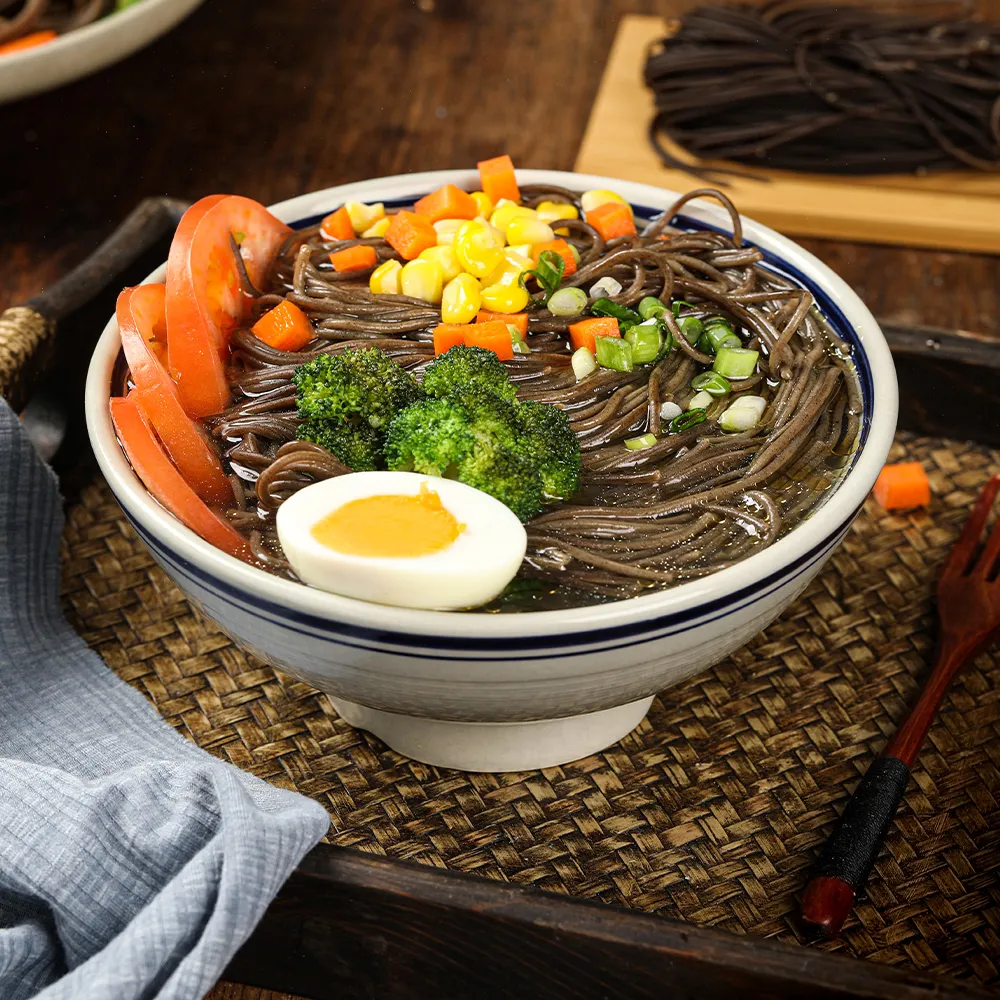soba noodles what are they made of
Soba Noodles What Are They Made Of?
Soba noodles, a staple in Japanese cuisine, have gained popularity worldwide due to their unique texture and health benefits. But what exactly are these noodles made of, and what makes them special?
The Main Ingredient Buckwheat
Soba noodles are primarily made from buckwheat, a gluten-free grain that has been cultivated in Japan for centuries. Contrary to what the name might suggest, buckwheat is not related to wheat and does not contain gluten, making it a suitable option for people with gluten intolerance or celiac disease. Buckwheat flour, the primary ingredient in soba noodle production, is ground from the seeds of the buckwheat plant.
The use of buckwheat gives soba noodles their distinctive earthy flavor and slightly nutty aroma. It is rich in nutrients, including protein, fiber, vitamins, and minerals, making it a healthier alternative to traditional wheat noodles. These nutritional benefits make soba a favored choice among health-conscious individuals.
Types of Soba Noodles
Soba noodles can vary depending on the proportion of buckwheat flour used in the dough. 100% buckwheat soba, known as juwari soba, is made entirely from buckwheat flour and offers a robust flavor and hearty texture. However, due to the delicate nature of pure buckwheat noodles, they can be more challenging to make and handle.
On the other hand, han-buckwheat soba contains a mixture of buckwheat flour and wheat flour, usually in a 7030 ratio. This combination results in a more pliable dough, making it easier to work with; thus, this type of soba is more commonly found in restaurants and supermarkets. The addition of wheat flour also mellows the flavor and alters the texture slightly, appealing to a broader audience.
The Process of Making Soba Noodles
soba noodles what are they made of

The process of making soba noodles involves several steps, from milling the buckwheat to forming the noodles. First, buckwheat seeds are roasted and then milled into flour. Depending on the desired flavor and texture, the milling process can vary. Coarser flours yield a more rustic noodle, while finely milled flour creates smoother, more delicate pasta.
Once the flour is prepared, it is mixed with water to form a dough. The ratio of water to flour is crucial and can vary based on the type of soba being created. After kneading the dough until it reaches the appropriate consistency, it is rolled out and cut into thin strips. These strips can then be cooked immediately or dried for later use.
Cooking and Serving Soba Noodles
Soba noodles are typically boiled in water for a short time, around 4 to 5 minutes, until they reach an al dente texture. Once cooked, they are often rinsed under cold water to remove excess starch and to cool them down quickly. This rinsing process helps maintain the noodles' texture and prevents them from becoming gummy.
Soba can be enjoyed hot or cold, making it a versatile dish. Cold soba is often served with a dipping sauce called tsuyu, made from soy sauce, mirin, and dashi, while hot soba is commonly served in a flavorful broth. Toppings can include various ingredients such as green onions, tempura, nori (seaweed), and even raw egg.
Health Benefits
In addition to being delicious, soba noodles offer several health benefits. Buckwheat is high in antioxidants, particularly rutin, which is linked to improved cardiovascular health. The fiber content aids digestion and promotes gut health. Furthermore, the protein in buckwheat is of high quality, containing essential amino acids necessary for bodily function.
Conclusion
Soba noodles are much more than just a type of pasta; they are a delicious, nutritious, and versatile food deeply rooted in Japanese culture. Made primarily from buckwheat, they offer unique flavors and numerous health benefits, making them a fantastic addition to any diet. Whether enjoyed cold with a dipping sauce or in a warm, comforting broth, soba noodles are a delightful culinary experience worth savoring. So next time you indulge in a bowl of soba, you’ll not only appreciate its flavor but also the rich history and wholesome ingredients that make it special.
-
Unleash Your Inner Chef with Delectable Italian Pasta CreationsNewsAug.01,2025
-
Savor Health and Flavor: Irresistible Soba Noodles for Sale Await!NewsAug.01,2025
-
Nourish Your Body with Premium Organic Ramen - A Culinary Delight AwaitsNewsAug.01,2025
-
Elevate Your Dishes with Our Exquisite Kinds of Egg NoodlesNewsAug.01,2025
-
Dive into Flavorful Convenience with Our Ramen OfferingsNewsAug.01,2025
-
Discover Exquisite Types of Naengmyeon and Chilled Soba NoodlesNewsAug.01,2025
-
Is Whole Wheat Pasta Healthy?NewsMay.30,2025
Browse qua the following product new the we

















































































































